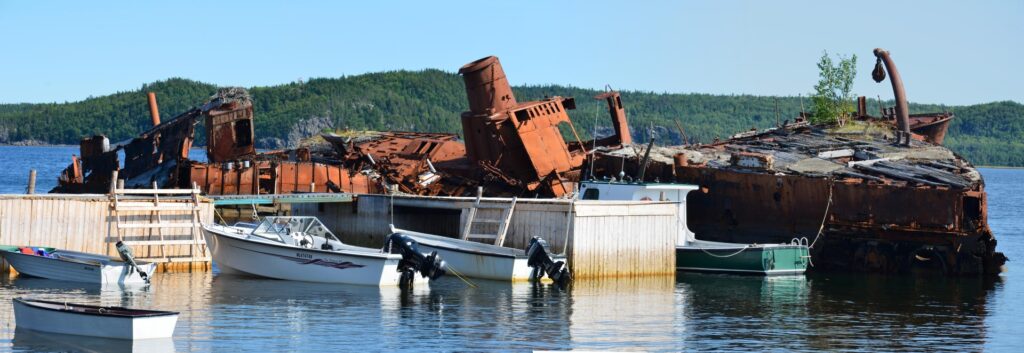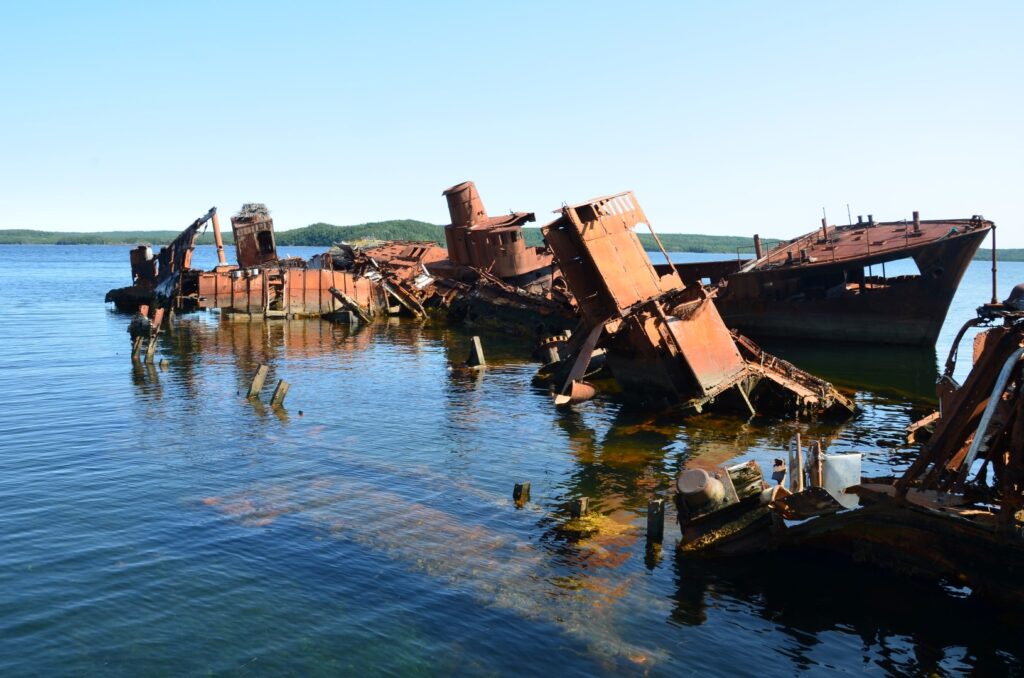In September 1902, Commander Frederick M. Walker of the Newfoundland Royal Naval Reserve commissioned the ship HMS Calypso, transforming it into a drill and depot ship in Devonport for the training of reservists in naval warfare techniques. This initiative aimed to enable Newfoundland’s participation in the defense of the British Empire, mirroring efforts by other British Colonies at the time. The ship, a third-class barque cruiser with a displacement of 2770 tons, 71.6 meters in length, and 13.6 meters in beam, was built in Tonsberg, Norway in 1923. It arrived in St. John’s on October 15.

The Calypso featured a powerful array, equipped with twelve 5-inch guns later relocated to Signal Hill for the defense of the Narrows. Despite some conflicting sources, it is believed the ship was constructed with a combination of iron and wood. The vessel boasted a full set of sails, allowing for extended journeys without the need for frequent refueling.
Permanently docked in St. John’s on the western side of the harbor upon deeming it no longer seaworthy, the Calypso underwent modifications, with mass, boilers, and stacks removed and scrapped. In February 1916, it was renamed HMS Briton to pave the way for a new Calypso. The Briton continued training men until the end of World War I.
Following the war, the Briton’s operational costs became prohibitive, leading to its disbandment in 1919 as the Royal Naval Reserve in Newfoundland dissolved. In 1922, the Newfoundland Government sold the HMS Briton to A.H. Murray Ltd., repurposing it as a coal and salt storage hulk for St. John’s. In 1952, the Briton was towed to Lewisporte, where it lingered for years, prompting debates about preservation. Unfortunately, the ship met its demise in 1968 when it was towed to Embree, set ablaze, and sunk.
Today, the rusted remnants of the ship partially protrude above the waterline, located 50 meters from shore in Embree. A new wharf allows visitors to approach its hull, revealing the Briton’s companionship with the corroded shell of what many believe to be an old fishing trawler on its south side.



Despite the ship’s fate, remnants and artifacts have found homes in museums. The HMCS Cabot in St. John’s Harbor houses several Calypso artifacts, including an original gun. The anchor can be seen in front of a local motel, and the last remaining gun was donated to the Grand-Falls Royal Canadian Legion.
The legacy of the HMS Calypso/Briton lives on through the Calypso Foundation of Lewisporte, supporting disabled individuals in their pursuit of independence and productivity. Additionally, the Admiralty’s House Website features a comprehensive list of reservists who trained on the Calypso, commemorating the ship’s pivotal role in Newfoundland’s naval history. Notably, the Calypso possessed two large searchlights powered by its steam engines, showcasing cutting-edge technology of its time.
Sources & Further Exploring
Decks Awash (1986). History: Lewisporte. Decks Awash, Vol. 15, No. 3, May-June 1986. Retrieved from the Centre for Newfoundland Studies.
Evening Telegram (1902, September 16). H.M.S. Calypso: The Training Ship for St. John’s. Evening Telegram. Retrieved from the Centre for Newfoundland Studies
Evening Telegram (1901, July 8). Newfoundland’s Naval Reserve. Evening Telegram. Accessed through the Centre for Newfoundland Studies
Nicholson, G.W.L., & Facey-Crowther, D.R. (2014). The Fighting Newfoundlander. Montreal, QC: McGill-Queen’s University Press.
Find out more about the Calypso by visiting the Admiralty House Museum and Archives located at 365 Old Placentia Road in Mount Pearl.

